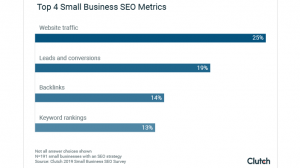Has it been awhile since you last reviewed the content shared on your company social media accounts? Maybe you established your Facebook and Twitter handles a few years ago, but have left them largely dormant since. Or maybe you’re on a tight budget and struggling to create content that gets noticed with audiences now than you were once able to with a bit more money.
If you’ve been out of the social loop for a moment, the best way to get back in is to stop delaying it and start preparing. For small businesses especially, statistics have shown that 71% of consumers that have a good social media experience with a brand are likely to recommend it to others. The longer you wait, the more your business could be missing out on reaching new consumers, interacting with them, and establishing trust and a rapport together. Here’s what you need to do now to get back up to speed.
1. Create a strategy
Unfortunately, writing a blog post or scheduling tweets on Twitter can’t be the extent of your social strategy. If you have no idea where to begin, utilizing the S.M.A.R.T goals method is a great start when creating the initial framework for your social media goals. It allows you to figure out your objective, establish goals, and pick the right metrics to measure your success.
2. Find the right social media platforms for your small business
Should you have a profile on every social platform all in the name of increasing the visibility of your offerings and services? Probably not — especially if you don’t have the bandwidth to manage each account. Head back to your strategy to determine the kind of content you want to market, who you want to target, and where your audience is located. Many businesses start by creating a Facebook account thanks to the platform’s versatility and wide user base. Other social media platforms for small businesses to consider include Twitter, Instagram, and LinkedIn.
3. Keep your brand consistent
You may not post the same content across all social platforms, but the content you post should be on brand with the look, feel, and experience of your business. Remember to focus on the message when posting and to avoid any content, however clickbait-y it may be, that doesn’t tie in with your brand.
4. Analyze and track your progress.
Now that you have a schedule, know the platforms you’re posting on, and have determined your brand image, it’s time to track your engagement levels. This is where you can see what type of content is working for your brand and what needs a little adjusting. Utilizing social media management sites like Hootsuite, Buffer, and Google Analytics can better help figure out how successful your posted content is and where to consider making adjustments.
5. Keep an eye on your competition
You don’t have to follow them, but pay attention to what other competing businesses are doing with their social media accounts. Observe what works for them and test whether or not you can implement a similar strategy for your own.
Above all, remember to be mindful that social media, and all of its algorithms, are constantly changing. Don’t allow yourself to get stuck in a rut where you never try anything new! As time progresses, you may find that you find the most success with video, a Twitter chat, or live Instagram Stories — all areas you might never have thought to focus on unless you conducted a little testing first.
Digital & Social Articles on Business 2 Community(6)






